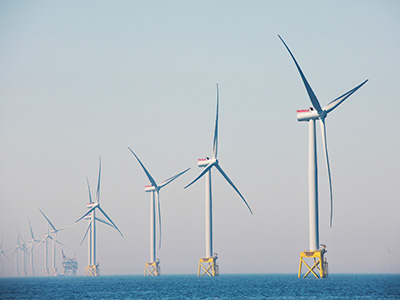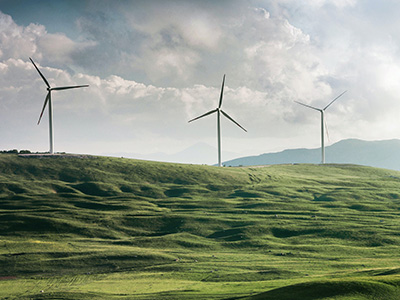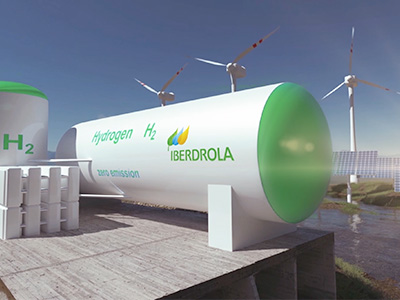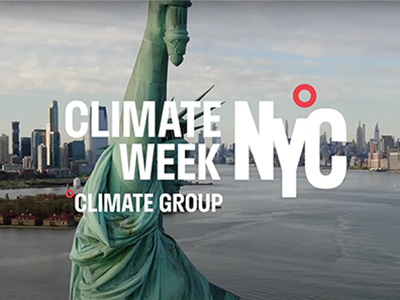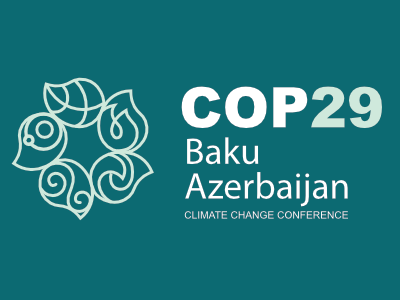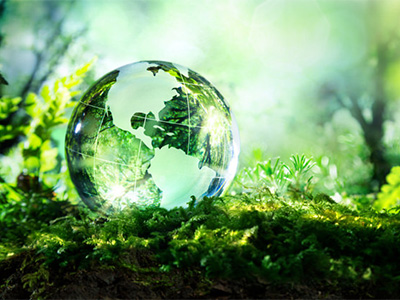Climate change
Leading the fight against climate change
At the Iberdrola Group we are committed to a decarbonized and sustainable energy model, moving towards a zero-emissions future.

The electricity sector plays a key role in achieving the goal set by the historic Paris Agreement to limit the increase in global temperature to 1.5 ºC and to tackle the climate emergency. The Iberdrola group, a global leader in the fight against climate change -goal 13 of the Sustainable Development Goals (SDGs)- and an active participant in the various Climate Summits, is fully aligned with this international pact and the energy transition.
At Iberdrola, we are highly committed to continuing to lead the way towards a zero-emission future, having set ourselves the goal of achieving emissions neutrality in our generation, electricity distribution and own consumption plants by 2030 (scopes 1 and 2) and reaching zero net emissions in all our activities by 2040. A convinced commitment to act today to protect the planet of tomorrow.
¿What is climate change?
Climate change is defined as a change in climate patterns attributable, directly or indirectly, to human activity. Greenhouse gases build up in the atmosphere and trap heat, increasing the greenhouse effect and raising the overall temperature of the planet.
Climate change is superimposed on the natural variability observable over equivalent periods of time, and also affects other changes in earth systems (melting ice, rising sea levels, etc.).

More ambitious targets to accelerate the energy transition
Iberdrola began a profound transformation of its business model more than 20 years ago, when it committed to a sustainable, safe, and competitive energy model that would allow it to address the fight against global climate change. In line with the measures adopted in the Paris Agreement, the group wants to actively and decisively contribute to a more sustainable and cero-emission future. An effort that will also promote the creation of sustainable value and that is based on the commitment to ensure a positive contribution to nature and society.
In its commitment to the Paris Agreement and the energy transition, Iberdrola's Climate Action Plan establishes an ambitious roadmap with the goal of achieving carbon neutrality for scopes 1 and 2 by 2030 and net-zero emissions before 2040 for all scopes, including scope 3 (expressed in carbon dioxide equivalent). The plan also defines the levers and associated actions that, in turn, contribute to the decarbonisation of the economy as a whole, as well as the values, tools and indicators on which the achievement thereof is based.
To achieve its commitment to reduce emissions, Iberdrola will continue to promote and lead a business model and an investment plan that are fully integrated into a decarbonised future. The company is moving forward with its investment plan and consolidating its business model, based on more renewables, more grids, more storage and more added-value solutions for customers.
Key elements of the Climate Action Plan
Objetives
- 2030
Neutrality in emissions for scopes 1 and 2
Direct emissions (generation and other) and indirect emissions fromelectricity T&D losses and own consumption
- <2040
Net-zero emissions for all scopes, including 3
Scopes 1, 2 and 3 (rest of indirect emissions that occur in sources that are not owned or controlled by the Company (e.g., gas sales, purchase of electricity for sale to the final customer, generation of electricity for third parties, suppliers)
Drivers
-
100 % Renewables
All energy 100% zero-emission
-
100% Intelligent networks
Networks more robust and 100% digitalised
-
Green procurement
100% green energy
Suppliers - Projects for joint reduction of emissions and use of "green" products
-
Green solutions for customers
Offer of green products and solutions (electrification, H2 green)
Alliances for green and decarbonized technologies
Values
-
Positive for society
Economy, industry and employment
Inclusive transition
Universal access to competitive energy
-
Positive for nature
Net positive impact on biodiversity in 2030
Circular Economy Model
Tools
-
Climate governance
-
Strategy and management of risks and opportunities
-
Technological and business innovation
-
Alliances and collaboration
-
Green finance

Iberdrola has approved near and long-termscience-based emissions reduction targets with the SBTi.
The SBTi has verified Iberdrola’s net-zero science-based target by 2039.
Note: Targets are expressed in CO2eq (carbon dioxide equivalent).
 SEE INFOGRAPHIC: Key elements of the Climate Action Plan [PDF]
SEE INFOGRAPHIC: Key elements of the Climate Action Plan [PDF]

"The current crisis has further reaffirmed the need to accelerate electrification with renewables and electricity grids to achieve full decarbonisation and energy self-sufficiency. After 20 years of experience, the Climate Action Plan is a new boost to Iberdrola's commitment to zero net emissions as a means of preserving the environment and generating employment and industrial development. The next decade will be crucial if we are to meet climate targets and protect biodiversity, and we must all work together today to achieve them."
Ignacio S. Galán
Iberdrola's Executive Chairman
Iberdrola leads the way in emissions reductions
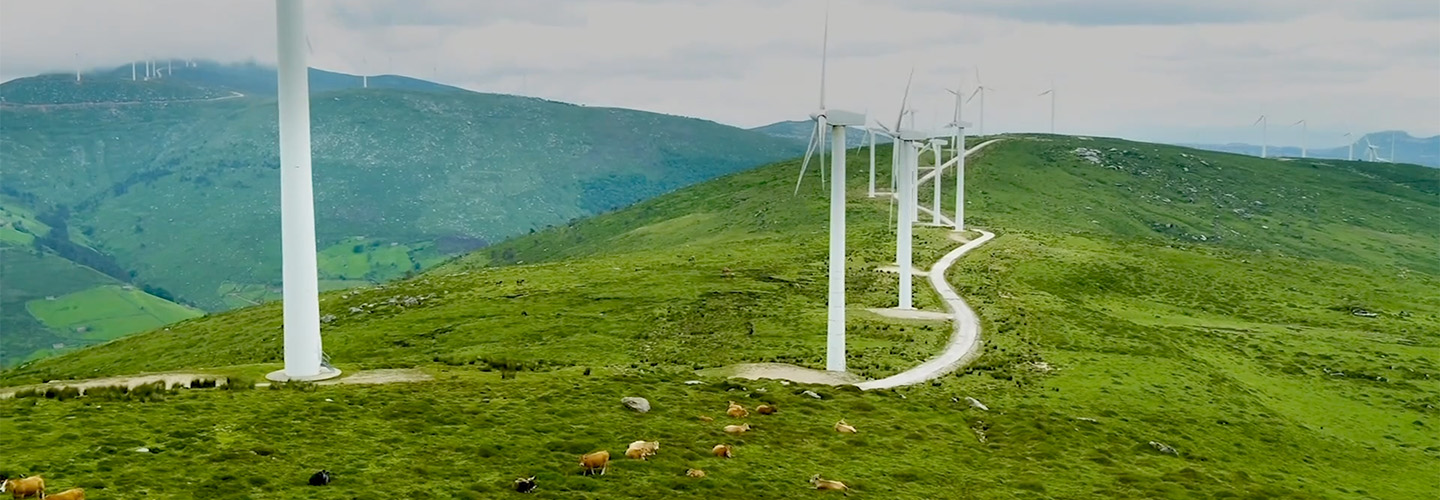
At Iberdrola, we are committed to a sustainable future for all.
Climate policies and partnerships
We work intensively within the framework of the global and regional debate on climate policies, participating actively in the main milestones of the global climate agenda.
Discover our climate policies and partnershipsClimate policies and partnerships
We work intensively within the framework of the global and regional debate on climate policies, participating actively in the main milestones of the global climate agenda.
Discover our climate policies and partnershipsOur presence at major events and climate projects
All the information about climate change
Essential information about global warming
Global warming is the greatest environmental threat we face and, as UN Secretary General, António Guterres, warns, "climate change is the defining challenge of our time". The scientific data show that its effects are occurring at an unprecedented rate and it has obvious consequences. The last eight years (2015-2022) have been the warmest on record, according to the World Meteorological Organization. In 2022, the global average temperature is estimated to be about 1.15 °C (from 1.02 to 1.27) above pre-industrial levels (1850-1900). The clock cannot be stopped, so if immediate action is not taken the situation will be irreversible.
The solutions to global warming require a coordinated response from all the countries of the world to try to reverse its main impacts (rising sea levels, rising average and extreme temperatures and melting ice caps). By signing the Paris Agreement, nearly 200 countries agreed to set emission reduction targets to keep the increase in global average temperature to well below 2 °C above pre-industrial levels1, and to pursue efforts to limit this increase to 1.5 °C, which would imply achieving net zero emissions in 2050. As part of this commitment, the European Union has committed to reduce net greenhouse gas emissions to zero by 2050.
What is the origin of climate change?
Industrialisation has meant that the concentration of greenhouse gases (such as carbon dioxide or methane) in the atmosphere, which help to retain heat so that our planet is habitable, has increased exponentially since the beginning of the last century, when, without human action, nature was responsible for balancing emissions. As these gases increase as a result of human activity, mainly due to the growth in the burning of fossil fuels, the amount of infrared radiation accumulated by the earth that contributes to the increase in the greenhouse effect is increased, and therefore the temperature of the entire planet rises, which is linked to other changes in the earth system. This current climatic alteration of anthropogenic origin is what is known as "climate change".
Although there are significant disparities between countries in their past and future contribution to GHG emissions, we will all suffer the consequences and coordinated action at the global level is required. Discover the countries most threatened by and vulnerable to climate change.
What role do greenhouse gases play in climate change?
The human influence on the climate system is clear. Our action generates greenhouse gases (GHGs) that concentrate in the atmosphere and retain heat, increasing what is known as the greenhouse effect and contributing to an increase in the planet's temperatures, with an effect that can last for many millennia before natural processes remove them from the atmosphere. Although most GHGs are of natural origin and, without them, life as we know it would not be possible as the planet would be too cold (it would be about 30 °C lower), industrialisation has caused an exponential increase in the concentration of these gases since the beginning of the last century.
Carbon dioxide (CO2) is one of these GHGs produced mainly by human activity and is responsible for 63 % of man-made global warming, the other gases emitted being methane, nitrous oxide and fluorinated gases. CO2 levels exceed 418 parts per million in 2022, above the levels observed in at least the last 800,000 years and above any concentration levels that man has ever lived with.
The future climate will depend on the warming from past anthropogenic GHG emissions as well as future emissions and natural climate variability. It is therefore necessary to stabilise the atmospheric concentrations of greenhouse gases at a level that avoids dangerous interference with the climate system. This requires action on the current energy model based on the use of fossil fuels (coal, gas and oil), the combustion of which generates large quantities of GHG, and which has been one of the main causes of climate change. Two-thirds of global GHG emissions are due to the production of energy for electricity, transport, heating and industry.
What is the greenhouse effect?
The term "greenhouse effect" refers to the retention of the Sun's heat on the Earth by a layer of gases in the atmosphere. Without them life as we know it would not be possible, as the planet would be too cold (it would be about 30°C lower). Most greenhouse gases are generated naturally. However, industrialisation has meant that the emission and concentration of these gases has increased exponentially since the beginning of the last century, when, without human action, nature was responsible for balancing emissions. As these gases increase, the amount of infra-red radiation accumulated by the earth increases and therefore global warming occurs.
Carbon dioxide (CO2) is the gas we produce the most and, therefore, the one responsible for most of the warming (due to the large volume of emissions it represents and its high level of permanence in the atmosphere), although there are other gases we emit in smaller quantities, but which can be much more powerful in contributing to the greenhouse effect. These are methane, nitrous oxide and fluorinated gases. In addition, we also emit a number of precursor gases that form substances once released into the atmosphere that contribute to the greenhouse effect, such as tropospheric ozone (O3), as well as aerosols such as black carbon (soot), which can have a cooling or warming effect.
What are the consequences of climate change?
The scientific evidence shows that warming and its related effects (e.g. melting ice, rising sea levels, or changing extreme events patterns such as heat waves, hurricanes or torrential rains) are occurring at an unprecedented rate. These changes greatly affect human well-being and all sectors of activity, both directly and indirectly, through their impacts on natural ecosystems and socio-economic systems. The extinction of animals and plants is also anticipated, as habitats will change so rapidly that many species will be unable to adapt in time.
In addition, the World Health Organization (WHO) has warned that the health of millions of people could be threatened by an increase in climate-sensitive infectious diseases such as malaria, malnutrition and water-borne diseases. However, the risks are unevenly distributed and generally greater for disadvantaged individuals and communities, widening the gap between developed and developing countries and exacerbating problems associated with migration and social conflict. In short, we are facing a climate emergency with serious economic and social consequences. If we do not act and do not take serious measures, rapid and decisive action now, the situation will be irreversible.
How is climate change affecting biodiversity?
The UN baseline report on biodiversity, published by the Intergovernmental Science-Policy Platform on Biodiversity and Ecosystem Services (IPBES) in 2019, warns of the unprecedented deterioration that human action is causing to nature. Climate change affects many aspects of biodiversity including species distribution, phenology, population dynamics, community structure and ecosystem function. These impacts add to the effects of other human pressures on ecosystems (destruction of habitats, pollution, overexploitation, invasive species), which are already affecting their vulnerability. This entails a loss of quality of the goods and services provided by ecosystems that act as vital support for human activity (water, food, medicine, pathogen control, etc.).
According to this study, 47 % of endangered land mammals, excluding bats, and 23 % of endangered birds have already been adversely affected by climate change in at least part of their range. In addition, climate change has accelerated the disappearance of living coral cover on coral reefs ("bleaching" of the reefs), with approximately half of the cover having disappeared since the 1870s. It should be noted that the impact of climate change will be increasing, worsening the state of ecosystems, in some cases exponentially, with the rise in global warming.
When was the first climate change summit?
The first climate conference was held almost 30 years ago, known as COP. The initials stand for Conference of Parties, the "Parties" being the states, some 200 of them, that have subscribed to the United Nations Framework Convention on Climate Change (UNFCCC). The background dates from the Earth Summit, held in Rio de Janeiro in 1992, when the world acknowledged the existence of climate change, based on data provided by the Intergovernmental Panel on Climate Change (IPCC). In Rio, 195 countries signed the Framework Convention which came into force in 1994. The following year, in 1995, the first COP was held in Berlin. It was the beginning of a series of global meetings that would be repeated annually to bring together world leaders with the aim of making decisions to reduce the emission of greenhouse gases and thereforeslow down climate change.
It was not until COP21 in 2015, that a global treaty, the Paris Agreement, ratified by 195 countries, would come into existence. This agreement set a common goal to keep the global average temperature increase below 2 degrees Celsius, while maintaining efforts not to exceed a 1.5 degree rise. The next milestone on the horizon is COP29 in Baku (Azerbaijan), where Iberdrola will continue to push for an acceleration of climate ambition.
Actions to deal with climate change
Climate change is the greatest challenge facing humanity and its solution requires joint action by all actors, with the mitigation and adaptation actions we take in the coming years being decisive. Governments must take action and reach ambitious commitments in terms of emissions mitigation and adaptation to their impacts. The private sector must implement multilateral agreements between governments and provide the necessary funding to meet the objectives.
The different economic sectors must be involved in these efforts. For example, in the field of energy, we must advance the decarbonisation process by promoting renewable energies, reducing the use of fossil fuels, encouraging energy efficiency and rationalised use of energy and promoting the sustainability of transport (sustainable mobility). And as citizens we all need to make changes, carry out actions and decisions to fight climate change global warming and protect the environment on a day-to-day basis. Actions to reduce climate change include: commitment (people who demand political action from governments); participation (individuals who contribute to the sustainability of their communities); healthy habits (walking, cycling, using public transport, consume responsibly, etc.); ecological awareness (societies that love and respect nature); efficiency and innovation (people who prioritise energy saving and the use of renewable energies).
Penalising greenwashing and disinformation
The private sector has an important role to play in curbing climate change, and it is the responsibility of concerned citizens to support the activities of those groups that demonstrate a real commitment to their own values. This is why it is important to detect and denounce possible greenwashing practices: misleading communications or marketing campaigns that make consumers believe that a brand is acting against climate change when it is not, with the sole aim of attracting customers who are aware of the climate change issues. This practice, which is becoming increasingly widespread, is very harmful both for the planet and for those companies that do invest resources in moving towards a new sustainable model.
What role does the energy sector play in the fight against climate change?
The current energy model based on the use of fossil fuels (coal, gas and oil), the combustion of which generates large quantities of GHG and has been one of the main causes of climate change. Two-thirds of global GHG emissions are due to the production of energy for electricity, transport, heating and industry. Achieving climate objectives requires a strategy based on the decarbonisation of electricity generation with renewables, energy efficiency and the electrification of other energy uses. Renewable energies in the electricity sector are competitive options with other conventional generation sources.
Technological development is also reaching end use energies, such as transport and building, making competitive solutions based on electricity possible. Therefore, transport is responsible for a quarter of the world's CO2 emissions and for most of the pollution in cities. A very effective way to solve both problems, which come from the same source, is to electrify transport with electric vehicles, to achieve a better use of energy thanks to their greater efficiency. This is because electric mobility is increasingly becoming a competitive solution (in fact, in just a few years the cost parity of the electric vehicle and conventional vehicles will be reached). In this transformation, electricity networks will play a key role in facilitating the penetration of renewables and the electrification of the economy.
How can we combat climate change in our daily lives? What are the best ways?
There are many actions that you can incorporate into your daily life to help reduce your climate and environmental impact. The important thing is to integrate climate change as one more decision criterion in everyday life (along with economic, health and other considerations). Walking, cycling or using public transport to get around is a good measure to avoid emitting CO2 into the atmosphere and if you have to use a private vehicle, opt for an electric one.
You can also try to reduce the use of fossil fuels at home, by electrifying consumption (e.g. heat pump instead of boiler) or by using renewable energy at home (aerothermal, geothermal, solar thermodynamics), while trying to improve energy efficiency at home: use energy-saving light bulbs, check your windows, keep your boiler well maintained, make efficient use of heating and be careful in your daily habits. Other ways to combat global warming include responsible consumption and investment, and the minimisation of waste, with a commitment to recycling and reuse. Recycling at home is essential for helping to slow down climate change.
What is a carbon footprint and how does it affect climate change?
The carbon footprint is the measurement used to measure the impact of human activities on climate change. This is an indicator that calculates the amount of greenhouse gases (measured in units of carbon dioxide equivalent) emitted into the atmosphere as a direct or indirect result of an individual, organisation, event or product. In an individual these emissions can be generated in transportation, food, home, etc.
The fight against global warming and its consequences necessarily involves reducing carbon dioxide emissions into the atmosphere, and this entails replacing fossil fuels with clean energy. There are tools and calculators you can use to help you calculate your carbon footprint.
Is information on renewable energy provided at school?
The fight against climate change is a challenge of such a great magnitude that it demands action from all stakeholders: governments, companies, NGOs, learning centres and ordinary citizens. Changes in behaviour and social demand are required from present and future citizens in all its facets. By means of a greater presence of climate change content and solutions in the classroom, the awareness and action of young people is increased.
It is essential for teachers to have tools to teach young people about the causes, impacts and consequences of the global challenge of climate change, help them understand the vulnerability of nature to human pressure and understand the role of energy and mobility as a solution to this global challenge, and encourage responsible and efficient consumption of resources.
What are citizens doing to combat climate change?
Many citizens' movements demand a responsible attitude from governments, companies and institutions towards the future of the planet, and a greater awareness, especially among young people, of how important it is to change our habits. These movements are increasingly gaining a prominent presence at the various climate summits, most notably the initiative promoted by Swedish activist Greta Thunberg called Fridays for Future. However, action is also being taken at all levels and all over the world, not only by civil society, but also by business, finance, politics and so on. For example, a growing number of cities (responsible for more than 70% of global greenhouse gas emissions and home to more than half of the world's population) are mobilising against climate change through targeted policies. Business and the private sector are also striving to contribute to the development of a sustainable economy, with many coalitions in favour of green growth and decarbonisation of the economy.
(1) The IPCC (SR15, 2018) uses the reference period 1850-1900 to represent the pre-industrial temperature.











